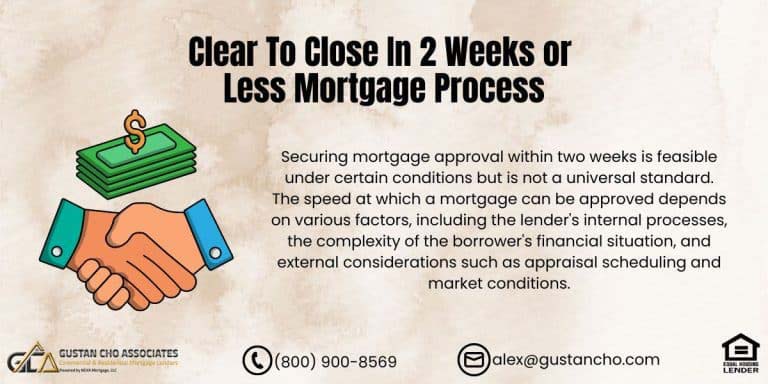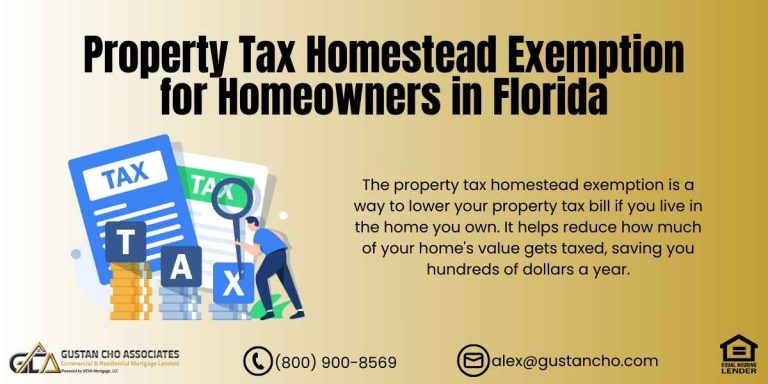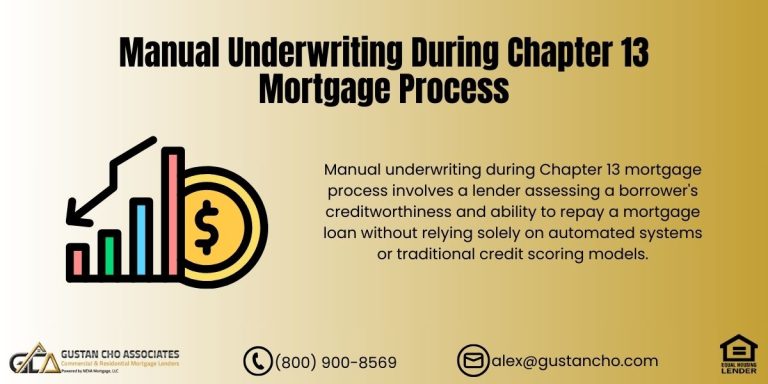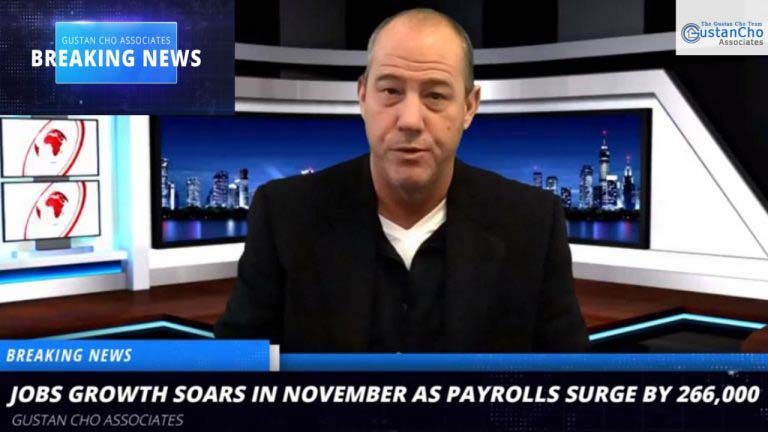This guide covers mortgage rate forecast and outlook seem promising with the election of a new President. Mortgage rate forecast is expected to move lower in 2025 into 2026. Mortgage rate forecast and outlook seem like rates will move lower but not quickly due to inflation and the Trump tariffs. John Strange, a senior mortgage loan originator at Gustan Cho Associates says the following about mortgage rate forecast and outlook for 2025 into 2026:
The 2025-2026 mortgage rate forecast and outlook seems promising and positive for first time home buyers, seasoned homebuyers, and homeowners thinking of refinancing their current home loans.
2025 has brought on many changes in the mortgage industry such as HUD and FHFA increasing the maximum FHA lending limit to $524,225 and Conventional loan limit to $806,500 unless the property was in a high-cost area. High cost loan limit for FHA and Conventional loans is capped at $1,209,750. There were changes to government-backed and conventional loans as well as non-QM loans. On Qualified Mortgages (QM Mortgages), the ability to repay got implemented and got more strick on the different types of Non-Qualified loan programs. HomePath conventional loans are no longer in existence. In the following paragraphs, we will cover the 2025-2026 mortgage rate forecast and outlook.
Impact of High Inflation, High Home Valuation, and Bad Economy on Mortgage Rate Forecast
Fannie Mae has changed rules on getting a conventional loan after a deed in lieu of foreclosure and short sale from 2-year waiting period after a deed in lieu or short sale with 20% down payment to a 4 year waiting period after the deed in lieu or short sale with a 5% down payment. Alex Carlucci, a senior mortgage loan originator at Gustan Cho Associates says the following about borrowers who had a mortgage included in their bankruptcy:
Another positive new Fannie Mae guidelines are that Fannie Mae has implemented changes on the waiting period requirements for borrowers with a prior mortgage included in bankruptcy.
The waiting period will go off the bankruptcy discharge date and not the recorded date of the foreclosure, deed-in-lieu of foreclosure, or short sale. The mortgage that is included in the bankruptcy cannot be reaffirmed. This will help tens of thousands of homebuyers who had a mortgage as part of their bankruptcy without having to wait for the recorded date of the foreclosure. In this article, we will discuss and cover mortgage rate forecast and outlook for 2025 into 2026.
Mortgage Rates Are Trending Down—Act Now!
Take advantage of lower rates before they climb again.
Mortgage Rate Outlook for 2025: How President Trump Could Change the Game
Donald Trump’s return to the White House has many homebuyers and investors wondering what the next four years could mean for mortgage rates. His team discusses bigger tax cuts, fewer rules, and even a fresh round of import tariffs. The economy could swing in new directions with all that on the table. This post digs into the likely mortgage rate forecast for Trump’s second term and gives you clear expert tips for getting the best deal no matter what comes next.
What Moves Mortgage Rates? A Quick Recap
Mortgage rates don’t just pop up out of thin air; they run on several big engines:
- Fed Policy: When the Federal Reserve tweaks its benchmark rate, it indirectly sets the cost banks pay to borrow money, which trickles down to mortgage loans.
- Inflation: If prices keep climbing fast, lenders usually raise mortgage rates so they don’t lose profit over time.
- Treasury Yields: The yield on 10-year U.S. Treasury bonds acts like a North Star for mortgages; when those yields go up or down, mortgage rates tend to follow.
- Economic Growth: A booming job market and rising GDP may increase rates, while recessions or slowdowns often pull them lower.
Government Policies and Mortgage Rates
Tax cuts, new tariffs, and moves to cut rules shape inflation, how much money Washington needs to borrow, and what mortgage rates consumers see. If Donald Trump wins the 2024 election, the policies he has talked about will almost certainly guide those three pieces. Here is a closer look at his plan for monthly home-loan payments.
Trump’s Economic Agenda: Key Policies Impacting Mortgage Rates
Should a second Trump term begin, four major ideas could sway the direction of mortgage rates:
- Tariffs on Imports: During his previous presidency, Trump slapped taxes on foreign goods, hinting at 10 to 20 percent fresh duties on almost all imports and up to 60 percent on Chinese items.
- Those extra costs tend to land on shelves, boost headline inflation, and could nudge mortgage rates higher over time.
- Tax Cuts: He also wants to keep the 2017 Tax Cuts and Jobs Act in place and add fresh cuts. Lower taxes can speed up growth, but also widen the budget gap.
- A bigger gap forces the Treasury to borrow more money, which often lifts bond yields and eventually flows to home-loan rates.
- Deregulation: Cutting red tape in banks and home-building may trim lender and builder costs.
- If that happens, firms might pass savings along to borrowers, helping to steady or even lower mortgage rates over the long haul.
How Immigration and Housing Policy Connect
- Immigration Policy: Stricter immigration rules, including large-scale deportations, could leave fewer workers on home-building sites.
- With fewer hands available, construction slows, labor costs climb, and so do prices for new houses.
- Less supply on the market, in turn, puts upward pressure on mortgage rates, as lenders react to a future in which new properties arrive more slowly than demand grows.
- Fannie Mae and Freddie Mac: Ideas to move Freddie and Fannie from public to full private status could also lift borrowing costs.
- Private firms would set aside more capital for each loan they back, a requirement to be paid for.
- Analysts guess that translates to an extra 0.43% to 0.97% on thirty-year fixed mortgages, or an annual bite of roughly $730 to $1,670 for the typical borrower.
Mortgage Rates Forecast After the 2024 Election
Trump’s return to the White House on November 5, 2024, sent mortgage markets on a wild ride. Between September and late October, the thirty-year fixed jumped from 6.09% to 6.54% as investors worried about inflation-stoking policy. A January peak of 7.04% came and went, yielding a 6.75% to 6.9% mid-year band.
Though Trump vowed to slash rates to 3% during the campaign, many analysts still see that promise as wishful thinking. Today’s numbers are miles above the 3% to 4.25% range from his first term, and lingering cost pressures from tariffs and tax cuts may keep rates high for years.
Expert Mortgage Rate Forecast for 2025 and 2026
With policy changes in Washington, housing experts have updated their views on where mortgage rates are heading over the next few years. Here’s a summary of the leading forecasts.
- National Association of Realtors (NAR): The NAR sees the average 30-year mortgage settling between 5.5% and 6.5% for the remainder of Trump’sTrump’s term, moving up and down as inflation and budget choices shift.
- Mortgage Bankers Association (MBA): The MBA expects the rate to hit 6.8% in the third quarter of 2025, edge down to 6.7% by the end of the year, and slide to roughly 6.6% in early 2026.
- Fannie Mae: Fannie now thinks the number will rest at 6.5% by late 2025 and then drop only slightly, to 6.1% by the end of 2026, an adjustment made after revisiting its inflation outlook.
- Freddie Mac: Freddie echoes the idea of higher-for-longer and expects only modest easing. This shift should eventually motivate more homeowners to refinance.
- National Association of Home Builders (NAHB): The NAHB agrees that the decade-ending average will land near 6.62% in late 2025 and slip just past 6% in 2026 under a mild market cooling.
- Worst-case scenario: Some analysts still warn that fresh tariffs, widening deficits, and continued strong hiring could push rates toward 8% or more.
- Best-case scenario: A serious slowdown or mild recession might push rates back into the 4% to 5% band. However, most experts think such a drop would need bigger forces.
- For the freshest outlook, type in “2025 mortgage rate forecast Trump presidency” and see what experts say.
Why People Feel Hopeful Right Now
Even though future borrowing costs could climb, many in real estate still sound upbeat about home loans and the broader market during a Trump term:
- Stronger Economy: Tax cuts mixed with lighter rules have sometimes increased growth.
- Home demand can stay strong when shoppers feel confident and jobs stay solid.
- If the Fed keeps inflation in check, that energy might help keep rates steady or nudge them down over time.
- Easier Lending: Moving red tape away from banks and builders could lower compliance costs.
- When lenders spend less, they can pass some savings on to buyers, and more relaxed rules can speed up new projects.
- Refi Window: Should short-term rates drop after a healthy growth spell, experts expect a huge wave of refinancing as current borrowers chase lower monthly bills.
- That jolt alone may keep lenders busy and keep mortgage products front and center for shoppers.
- Boosting Supply: A tough immigration stance and lighter codes could let cities add homes faster.
- More permits and quicker builds ease the strain of low inventory, hopefully slowing runaway prices in hot areas.
- Still, these upsides share the stage with risks, including inflation pushed higher by tariffs and financing made pricier by larger budget deficits.
Challenges for Homebuyers
Even though the housing outlook has a few bright spots, prospective buyers should keep these hurdles in mind:
- Higher Rates: Tariffs and tax breaks might keep inflation stubborn, leaving long-term fixed mortgage rates stuck in the 6-7% range or even higher.
- Affordability Issues: Since 2020, many markets have seen prices jump more than 40 percent, and new tariffs could push building costs up again, squeezing budgets even harder.
- Market Volatility: An unpredictable policy playbook often creates nervousness, which causes mortgage rates and home values to fluctuate.
- Limited Inventory: Firmer immigration rules usually mean fewer workers on site, slowing the pace of new homes and tightening supplies for years to come.
- To read deeper expert takes, type phrases like “Trump mortgage rate impact 2025” or “housing market under Trump Trump” into your search bar.
Tips for Homebuyers in 2025
While rates are swirling, buyers can still clear a path through the fog with these focused steps:
- Shop around for Lenders: Because every lender weighs risk differently, gathering quotes keeps the smallest spread from costing tens of thousands.
- Get Pre-Approved: A fast pre-approval shows sellers you mean business and serves as a budget map when every point uptick feels heavier.
- Think About ARMs: If fixed loans stay steep, an adjustable mortgage may offer a leaner early payment, but be ready for that rate to tilt up later.
What the Market Is Telling Us
- Watch Key Numbers: Stay on top of inflation figures, Treasury bond yields, and every Fed press release.
- These signals set the stage for any rate move.
- Partner with a Pro: An experienced real estate agent does more than open doors.
- She matches your budget with listings and steadies you through sudden price swings.
- Be Ready to Act: With housing supply up 17 percent from last year, buyers have a rare chance to push back on terms.
- Waiting for a dramatic rate drop is risky, since analysts expect 6-plus percent until late 2026.
Experts Predict Lower Rates Ahead—Are You Ready?
Don’t miss out on the window of opportunity in 2025’s mortgage market.
Questions People Are Asking About Rates Under Trump
Will rates fall to 3 percent like he said?
- Most specialists say no, because high inflation and economic uncertainty show few signs of easing.
- A range of 6 to 7 percent looks more realistic through 2025.
What about new tariffs?
- Higher tariffs make imported goods pricier, feed inflation, and can nudge lenders to lift long-term Treasury yields.
- Those yields usually pull mortgage rates along with them.
Can a President cut mortgage rates?
- Direct control over rates lies outside the White House, resting instead with markets and an independent Fed.
- Still, any presidential plan may move investor sentiment, which matters.
Should You Wait for Lower Rates Before Buying a Home?
If you hope mortgage rates drop below 5 percent before you buy, that day may never come. Most experts now say rates will stay relatively high for a while. So, jumping in now makes sense if you spot a house that ticks all your boxes. Fresh listings are hitting the market, and competition is easing.
Try the search “mortgage rate FAQs 2025 Trump” for up-to-date insights.
The outlook for loans during a second Trump presidency is both promising and confusing. His plans could spark faster growth, fueling a refinance wave. Conversely, new tariffs and large tax cuts increase inflation, locking rates in the 6-7 percent band through 2025 and 2026. Buyers who track news, team up with savvy pros, and make smart moves can still seize solid deals.
Are you thinking about entering the housing market? Talk to a friendly lender or real estate agent soon so you know your options and can avoid sudden rate swings.
Please pass this guide on to anyone considering a house purchase, and comment below, sharing how you think TrumpTrump might shape mortgage costs!
Mortgage Rate Forecast and Outlook For Homebuyers
For the past year, 30 year fixed rate mortgage rates have been consistently around the 4.0% mortgage rate mark. One year ARM averaged around 2.5% in the past year. Most mortgage industry analysts are saying mortgage rate forecast and outlook is that mortgage rates will gradually drop and go lower in 2025 going into 2026. This analysis is based on the track record of the low yields of the U.S. Treasury notes.
Mortgage Rates Outlook With A New President
For the past five years prior to 2020, the average mortgage rates on a 30 year fixed rate mortgage loan have been consistently stable below the 5.0% mark. Mortgage rates today are nearing 7.0% which has put a dent and slowdown on the housing and mortgage industry. The low mortgage rates have stimulated home purchases throughout the country and has real estate prices appreciate consistently in all counties in the United States. Many homeowners who had homes with underwater mortgages are now able to sell or refinance their homes and move on.
Lenders Loosening Credit Standards
Right after the credit collapse of 2008 and the whole revamp of the residential mortgage industry, mortgage lenders have really tightened credit. Days of stated income mortgage loans have long been gone and the sub-prime mortgage market is now no longer in existence. However, the introduction of Non-QM loans such as bank statement loans, DSCR, P and L loans, and other alternative mortgage loan programs has helped out many real estate investors and those who did not declare sufficient income.
You need documented income in order to qualify for a residential mortgage loan. Excellent credit but no income documentation will get you nowhere in a mortgage loan approval. However, if you have income documentation but poor and low credit scores, you can get a residential mortgage loan approval.
Since 2010, more and more mortgage lenders are loosening their credit standards and eliminating many of their mortgage lender overlays. This loosening in credit is expected to continue throughout the course of 2025. Both HUD and Fannie Mae is also implementing new rules and regulations with regards to credit.
Credit Scores and Mortgage Rate Forecast and Outlook
Average credit scores for conventional mortgage loan borrowers are 720 FICO out of a possible of 850 FICO nationally. According to the United States Department of Housing and Urban Development, HUD, the parent of the Federal Housing Administration, the average credit scores of FHA borrowers are 680 FICO.
An FHA borrower can qualify for a 3.5% down payment home purchase mortgage loan with a credit score as low as 580 FICO. Many lenders have eliminated many overlays due to the high competition among lenders.
More and more mortgage companies are lowering their credit score requirements due to the historic high rates, high inflation, and inflated home prices. Many lenders who did not cater to borrowers with under 600 credit scores have lowered their minimum credit score requirements to 500 FICO.
Lower Rates Could Mean Bigger Buying Power
See how this rate trend could help you qualify for more home.
Other Mortgage Loan Programs
Fannie Mae has brought back the 3% down payment conventional mortgage loan program for first time home buyers. Those who had a mortgage as part of their bankruptcy has a great advantage because the waiting period starts from the discharge date of the bankruptcy and not the recorded date of the foreclosure, deed in lieu of foreclosure, short sale. Those who are W-2 wage earners and have tons of tax writeoffs on their tax returns do not need to worry about submitting their income tax returns. There are mortgage lenders that do not require two years of tax returns as long as they are full-time W-2 wage earners. Only two years of W-2s are required.
2025 UPDATE: Mortgage Rate Forecast Seems Promising With Election Of New President
This BLOG has been updated on July 10, 202. As covered on this blog, the mortgage rate forecast and outlook seems very promising with the election of President Donald J. Trump. The new President is thinking about abolishing the Consumer Protection Financial Bureau and cutting back on regulations. NON-QM Loans are back and are becoming increasingly popular. Mortgage rate forecast seem like it is going to be move down with Trump putting pressure on Fed Chairman Jerome Powell. Chad Bush, a mortgage loan originator at Gustan Cho Associates says the following about the 2025-26 mortgage rate forecast as follows:
With high rates, inflated home prices, and uncertain economy, the housing market remains stronger than ever. Mortgage lenders seem to want to originate and fund more loans.
FHA and Conventional loan limits have slightly increased for the past eight years including for 2025. The mortgage business is still extremely regulated and many are hoping that the Trump Administration will eliminate the many regulations the mortgage industry has. There seemed no end to mortgage regulations and new guidelines that were being implemented on government loan programs where it made it almost impossible for a loan officer to know all the regulations for every loan program. Many lenders seem to be implementing more and more lender overlays on top of the minimum lending guidelines. Gustan Cho Associates Mortgage Group will keep our viewer updated on the upcoming mortgage rate forecast.
- Related> Fannie Mae Single Family Homes
- Related> How Fannie Mae can boost your home value
- Related> Single family originating and underwriting
- Related> 2015 guidelines on mortgage after bankruptcy
Smart Borrowers Move When Rates Are Low
Let’s run the numbers and show you how much you could save.










